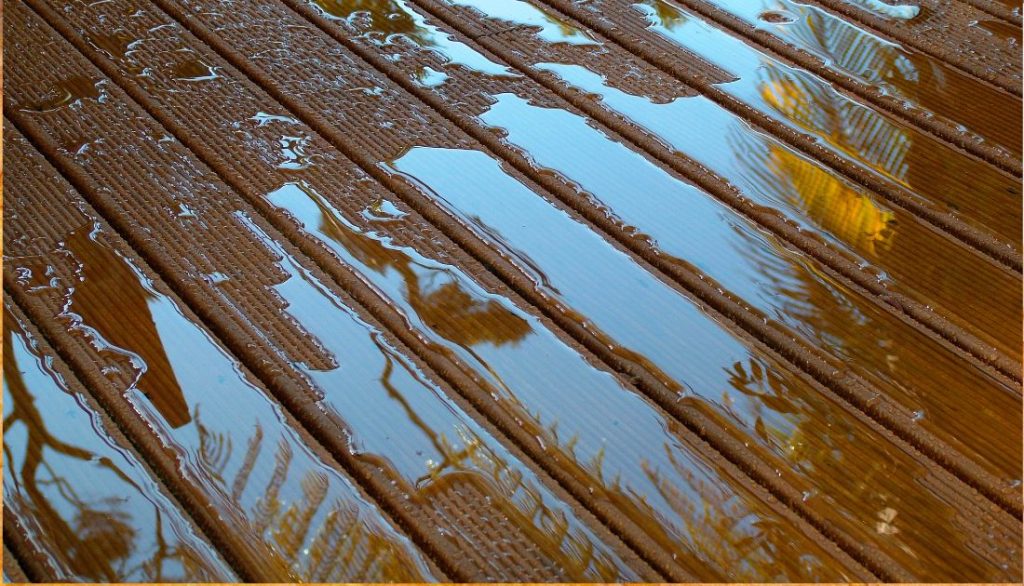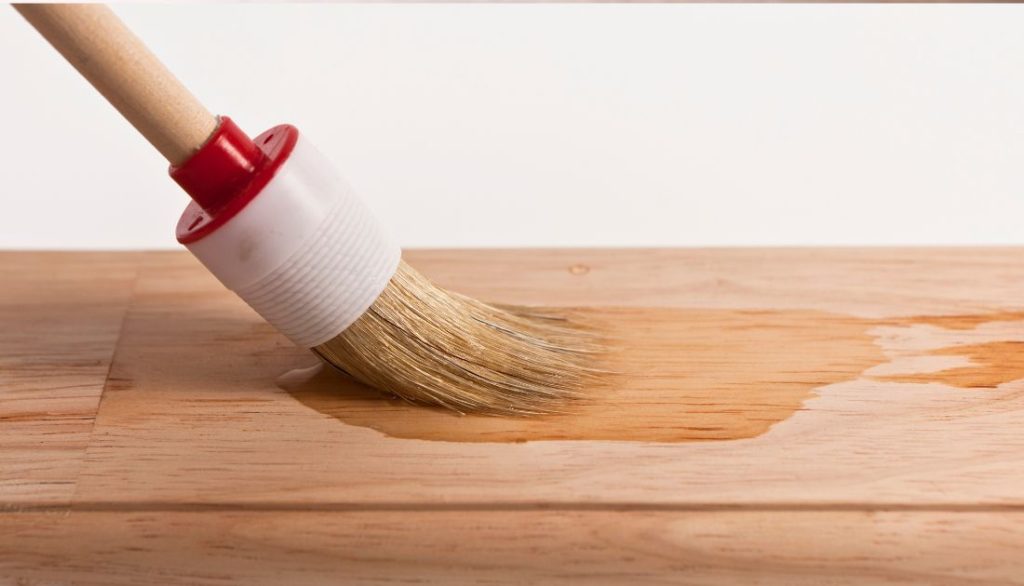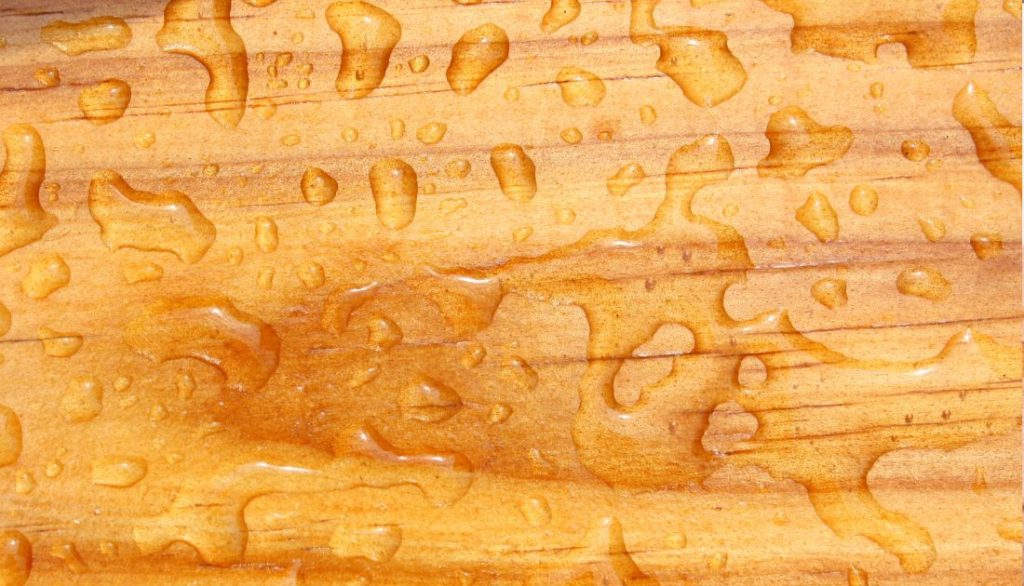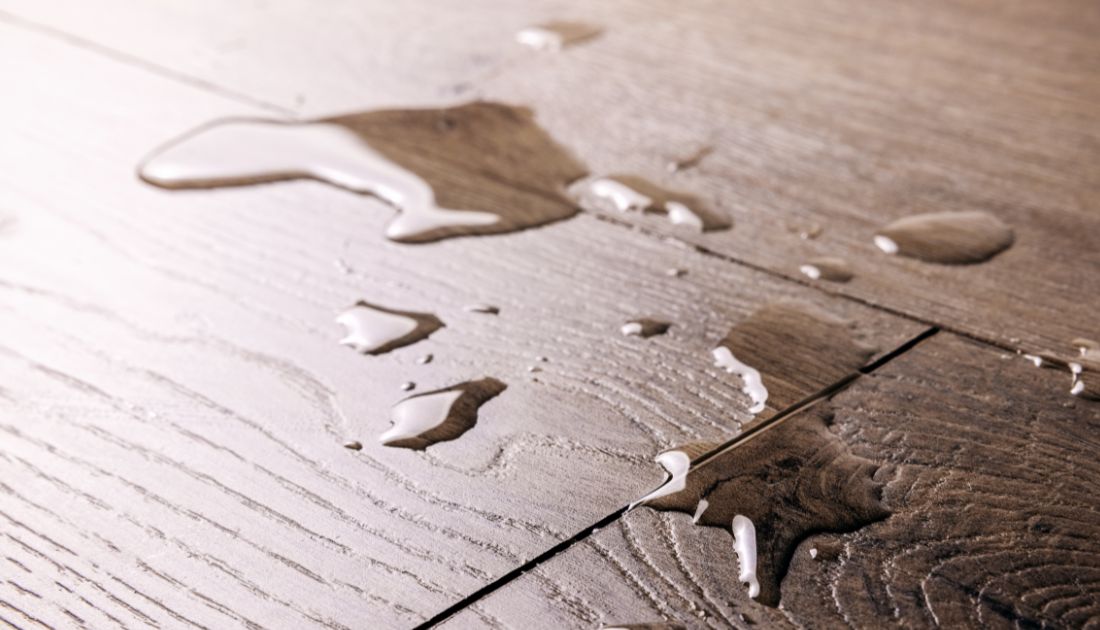Table of Contents
How to waterproof wood?
Wood is a versatile and beautiful material that adds warmth and charm to any space but is also vulnerable to water damage. Whether working on an outdoor construction project or simply looking to protect your indoor wooden furniture, knowing how to properly waterproof wood ensures its longevity and aesthetic appeal.
Waterproofing wood involves applying treatments or coatings to wood surfaces to protect them from water damage, moisture, and other environmental elements. The primary goal is to create a barrier that prevents water from penetrating the wood, which can cause swelling, warping, rot, and deterioration over time. Waterproofing extends the life of the wood, maintains its structural integrity, and often enhances its appearance.
Understanding the importance of waterproofing wood
Wood is a natural material susceptible to moisture damage, which can lead to rot, warping, and decay. Waterproofing wood is essential to protect it from these potential issues and ensure longevity.
By creating a barrier against water penetration, waterproofing helps prevent structural damage and extends the life of your wood furniture, decks, fences, or other outdoor structures.
Untreated wood can easily absorb water without proper waterproofing, swelling, and shrinking as it dries out. This constant wetting and drying cycle weakens the wood fibers over time, making them more vulnerable to cracking and splintering.
Additionally, moisture provides an ideal environment for mold growth and insect infestation in untreated wood. Investing in waterproofing products not only enhances the appearance of your wood but also safeguards its integrity against harsh weather conditions.
Choosing the right wood for your project
When selecting wood for your project, consider factors such as durability, appearance, and intended use. Hardwoods like teak and cedar are naturally resistant to moisture and decay, making them ideal outdoor furniture or decking choices. Softwoods like pine and spruce are more affordable options but may require additional treatment to improve water resistance.
It is essential to choose a wood species that aligns with your project requirements. Some woods excel in wet environments, while others are better suited for interior applications.
Additionally, be mindful of sustainability when selecting your wood to ensure responsible sourcing practices. Ultimately, the right choice of wood will contribute significantly to the longevity and performance of your waterproof project.

Selecting the best waterproofing products
When choosing waterproofing products for wood, opt for those specifically designed for outdoor use. Look for formulas that offer UV protection to prevent color fading and damage from sun exposure. Water-based sealants are often preferred as they are environmentally friendly and easier to clean up.
Consider the type of wood you are treating before selecting a product. Some woods may require specialized treatments or specific types of sealants to ensure proper protection. Always read product labels carefully to ensure compatibility with your project and follow application instructions closely for optimal results.
Wood Waterproofing Methods
Know more about how to waterproof wood.
Wood Oils Wood oils, such as linseed, tung, and Danish oil, are natural solutions for waterproofing wood. These oils penetrate deep into the wood fibers, providing a protective barrier against moisture. Linseed oil is widely used for its easy application and natural finish, while tung oil offers superior water resistance and durability.
Applying wood oils typically involves several coats, with each coat allowed to soak in and dry before the next is applied. Regular reapplication is necessary to maintain the protective layer.
Sealant Sealants are popular for waterproofing wood, providing a strong, durable barrier against moisture. These can be silicone-based, polyurethane, or epoxy sealants. Applying a sealant involves cleaning and sanding the wood surface, then applying the sealant in thin, even coats.
Sealants form a hard, protective layer on the surface of the wood, effectively blocking water and other elements. They are particularly useful for outdoor furniture, decks, and other wooden structures exposed to the elements.
Stain and Sealer Stain and sealer combinations offer the dual benefit of enhancing the wood’s appearance while protecting against moisture. These products come in various colors and finishes, allowing you to customize the look of your wood while ensuring it remains protected.
Applying a stain and sealer involves staining the wood to achieve the desired color and then sealing it with a protective layer. This method is particularly effective for exterior wood, adding aesthetic appeal and durability.
Laminate Laminate is a synthetic material applied over wood surfaces to provide high water resistance. It consists of multiple layers fused under heat and pressure, including a decorative and protective top layer.
Laminating wood involves adhering these layers to the wood surface, creating a durable and waterproof barrier. This method is often used for indoor applications like countertops, flooring, and furniture, providing a sleek, easy-to-clean surface that withstands moisture and wear.

Preparing the wood surface for waterproofing
Clean the Surface: Begin by thoroughly cleaning the wood surface with a mild soap and water solution to remove dirt, grime, and any other contaminants that may prevent proper adhesion of the waterproofing product.
Sand the Wood: Lightly sand the wood surface after cleaning to smooth out any rough patches or imperfections. This will help ensure an even application of the waterproofing product and promote better absorption into the wood fibers.
Fill in Cracks and Holes: Inspect the wood surface for any cracks or holes, and fill them in with a suitable wood filler or caulk. This step is crucial to prevent water from seeping into these vulnerable areas and causing damage over time.
Applying waterproofing treatments effectively
When applying waterproofing treatments to wood, ensure the surface is clean and dry before starting. Dirt and moisture can prevent the treatment from adhering properly.
Use a brush or roller to apply the waterproofing product evenly across the wood surface. Cover all areas, including edges and corners, for maximum protection.
As the manufacturer recommends, allow sufficient drying time before exposing the treated wood to water or weather elements. This will ensure long-lasting results and effective protection against moisture damage.
Maintaining and reapplying waterproofing over time
Regular Inspection: Consistent maintenance is the key to long-lasting waterproofing. Check the wood surface regularly for signs of wear or damage.
Cleaning and Preparing: Before reapplying waterproofing, clean the wood thoroughly to remove dirt and debris that could affect the new finish.
Choose Quality Products: Invest in high-quality waterproofing products designed specifically for wood to ensure effective protection.
Over time, exposure to elements like sun, moisture, and temperature changes can break down the waterproofing on your wood surfaces.
By staying proactive with regular inspections and timely reapplications, you can significantly extend the lifespan of your wooden structures. Remember that prevention is always easier than repairs after extensive damage has occurred.
Troubleshooting common waterproofing issues
Peeling or Flaking Finish: If you notice the waterproofing finish peeling or flaking off the wood surface, it could be due to poor adhesion. To fix this issue, sand down the affected area, clean it thoroughly, and reapply a new coat of waterproofing sealer.
Water Stains: Water stains on your wooden surface can be unsightly and indicate that water is penetrating through the sealant. To remove these stains, sand the area lightly and reapply a fresh coat of waterproofing solution to prevent further water damage.
Cracking or Splitting Wood: Cracks or splits in the wood are signs of moisture-related issues that need immediate attention. To address this problem, repair any damaged areas by filling them with wood putty before applying a new layer of waterproofing sealant to protect the wood from further deterioration.
Exploring advanced waterproofing techniques
Advanced waterproofing techniques can significantly enhance the durability and longevity of wood structures.
One such technique is penetrating sealers deep into the wood fibers, providing long-lasting protection against moisture infiltration. Additionally, applying multiple coats of a high-quality waterproofing finish can create an impenetrable barrier on the wood’s surface.
Another advanced method involves utilizing nanotechnology-based sealants, which form a protective film at the nano-level to repel water effectively. These innovative sealants offer superior resistance to UV rays and harsh weather conditions, ensuring your wood remains protected for years.
By incorporating these cutting-edge waterproofing techniques into your maintenance routine, you can elevate the performance and longevity of your wooden surfaces like never before.

FAQs
How can I seal raw wood for outdoor use?
To seal raw wood for outdoor use, you can use various products, such as exterior-grade sealants, varnishes, or polyurethane. Start by sanding the wood to a smooth finish, then apply a wood preservative to protect against rot and insects.
Once dry, apply a sealer in thin, even coats, allowing each layer to dry completely before adding the next. For best results and to ensure the sealer suits outdoor conditions, apply at least two to three coats.
What are the best methods to prevent untreated wood from rotting?
Preventing untreated wood from rotting involves several key steps. First, ensure the wood is kept dry and has good airflow around it. Elevate the wood off the ground to avoid contact with moisture.
Apply a wood preservative, such as borate, which penetrates the wood and protects it from rot and insect damage. Regular maintenance, such as cleaning and reapplying protective finishes, will also help prolong the life of the wood.
Is waxing effective for waterproofing wood?
Waxing wood provides some water resistance but is not the most effective waterproofing method, especially for outdoor use. Wax can repel water and add a slight protective layer, but it wears off quickly and requires frequent reapplication. For more robust waterproofing, consider using exterior-grade sealants, varnishes, or specialized wood waterproofing products for outdoor conditions.
What is the most cost-effective way to protect wood outdoors?
The most cost-effective way to protect wood outdoors is to use a combination of preventive measures and affordable treatments. Start by using pressure-treated wood, which is pre-treated to resist rot and insects.
If using untreated wood, apply a homemade wood preservative, such as a linseed oil and turpentine mixture, which can be less expensive than commercial products. Regular maintenance, such as cleaning the wood and reapplying treatments, will also help extend its lifespan without breaking the bank.
